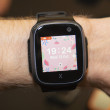mmWave
(Millimeter Wave)
Radio frequency bands above 24 GHz.
Traditionally, cellular networks operated in frequency bands below 6 GHz. These are now referred to as Sub-6 GHz bands.
See: Sub-6 GHz
5G technology introduced the capability to use one or more bands at much higher frequencies, known as mmWave.
See: 5G NR
Radio signals using mmWave do not travel as far as those using lower frequencies, and do not penetrate solids (walls, trees, and windows) as well. But they offer the potential for much faster data speeds.
mmWave is ideal for offering faster data and more network capacity in very dense areas, including sports venues, train stations, and the downtown areas of major cities.
In the U.S., mmWave bands licensed for 5G service include 24, 28, 37, 39, and 47 GHz.
The two major mmWave bands in use in the US are bands 260 and 261, also referred to as NR 260 / 261 or n260, n261.



